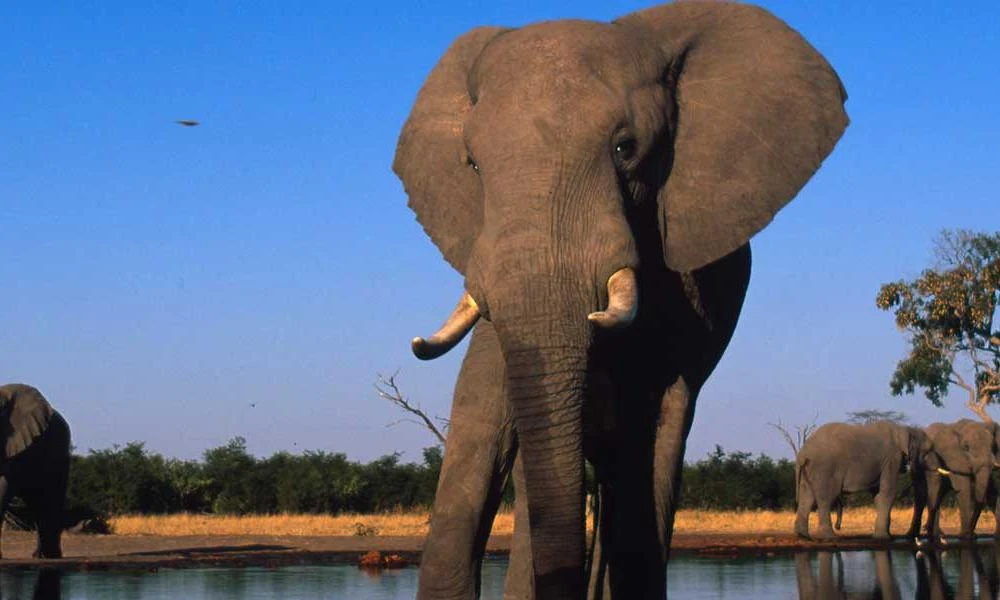 |
| Straight-tusked elephants (models) Source: Wikipedia |
How can elephant DNA teach us about why science works and creationism doesn't?
Creationists, with their simplistic black vs. white view of the world, often pour scorn and derision on science for changing its collective mind so frequently. This comes of course from a mindset which values 'certainty', no matter how illusory, more highly than truth. Truth is sacrificed in the search for the cosy comfort of 'certainty'.
But science doesn't look for certainty. Science simply tries to get as close to the truth as possible and a truth which can be demonstrated. The analogy is of a car being driven to a destination. Every movement on that journey is a sign of progress, not a sign of failure. Constant change of position is the method of progress. Science has to change its collective mind to make progress. Religions fail to make progress because they can't change their collective minds without abandoning their religion. With religions, the dogma is everything.
So what has this to do with elephant DNA?
A paper presented to the 7th International Symposium on Biomolecular Archaeology meeting in Oxford, UK, on 15 September, on the results of a complete sequencing of the genome of an extinct mammoth, the straight-tusked elephant, Paleoloxodon antiquus, illustrates this point very nicely. It has shown that some assumptions about the evolution of the current three recognised species of elephant and their relationship might in fact be wrong.
The extinct straight-tusked elephant lived in European forests until about 100,000 years ago. The three modern elephant species are classified into two genuses (Elephas and Loxodonta) with a single Asian species, Elephas maximus or Indian elephant, and two African species, Loxodonta cyclotis or forest elephant and Loxodonta africana or savannah elephant. The latter two were only classified as different species in 2010.
 |
| Indian elephant |
This calls the current taxonomy into question and suggests the Loxodonta genus is invalid despite similar morphology and the ability to interbreed successfully. This research was based on the complete genomes of two 120,000 year-old samples of straight-tusked elephants from Germany and is the oldest genome recovered from a warm environment.
 |
| African forest elephant |
This illustrates another flaw in the thinking of creationists who like to imagine living animals all neatly classified into distinct species with a neat, precise definition of what constitutes a species. This makes it easier to fit the evidence into their preferred model where they like to imagine some sort of barrier in the chemistry or physics of change in allele frequency which prevent new species arising by natural selection acting on inherited variation.
Biologists, of course, have no such neat definition of a species and only use imprecise, utilitarian definitions because what matters is how species are related not the precise details of how they arose or diverged. This is a creationist obsession because the whole idea of evolution and divergence is anathema to their superstition.
 |
| Africa savanna elephant |
Evolution is entirely utilitarian and has no obligation to conform to any norms or to provide a situation which is convenient to taxonomists. Taxonomy is the art of trying to fit the reality into an essentially arbitrary, man-made classification system which demands binary thinking - there either is or isn't a definite, distinct species for classification purposes. This becomes especially difficult with a taxon that is in the process of diverging with no particular pressure to complete the process. No biologist worth his salt sees taxonomic classification as anything other than that. Barriers to hybridization only evolve when there are strong selection pressure for them, for example, if specialization would mean a hybrid is not specialized for either parent's niche so will be at a disadvantage in either. These barriers can be postzygotic, in other words they prevent an embryo developing or produce an infertile hybrids, or prezygotic, in other words they prevent mating or successful fertilization.
In elephants, because the hybrids are normally viable and successful because the lifestyles of different isolated populations are not sufficiently divergent, there has been little or no such pressure. However, prolonged geographical isolation and has led to distinct genomes. More work is now needed to understand better the relationships between the extinct and living species and to what extent genes flowed between species at different times in evolutionary history, and to base current taxonomy in this new understanding.
None of this is a problem for evolution nor for theories about the mechanisms causing it. What it does do is expose the simplistic and entirely inadequate, black vs. white thinking of creationism and the extent to which creationism depends on notions that are not seen in reality.
'via Blog this'


No comments :
Post a Comment
Obscene, threatening or obnoxious messages, preaching, abuse and spam will be removed, as will anything by known Internet trolls and stalkers, by known sock-puppet accounts and anything not connected with the post,
A claim made without evidence can be dismissed without evidence. Remember: your opinion is not an established fact unless corroborated.